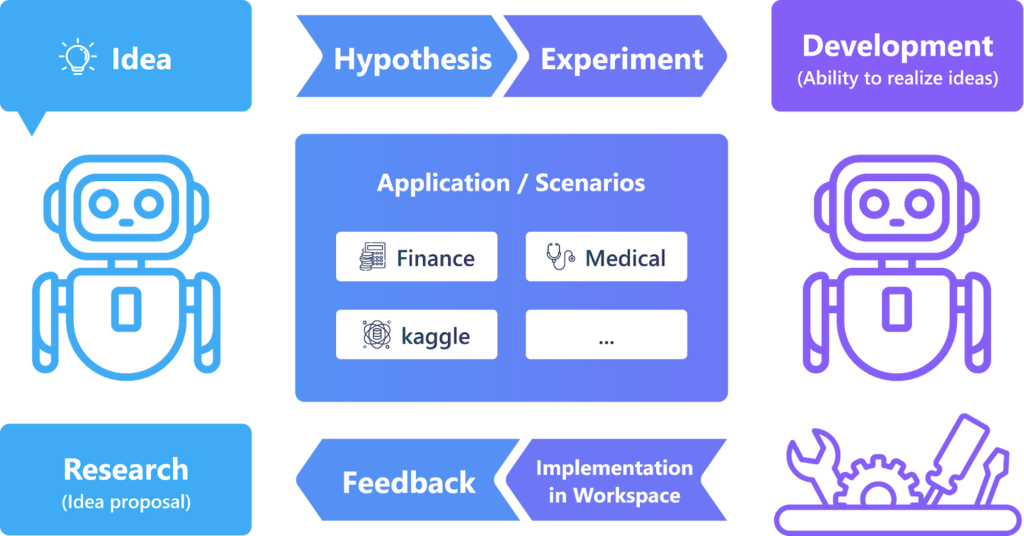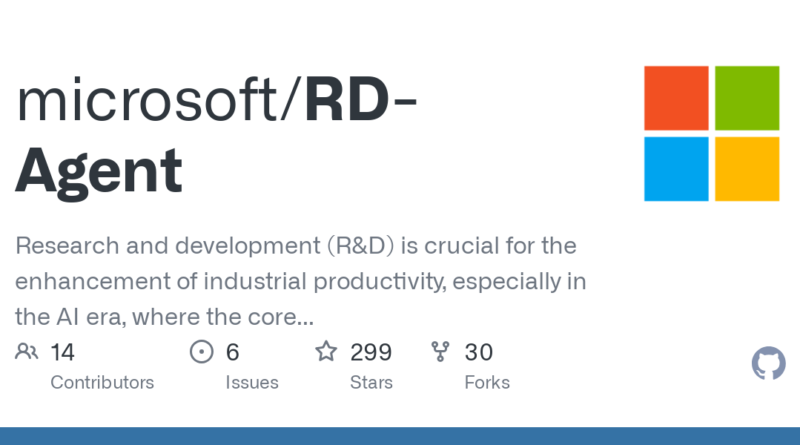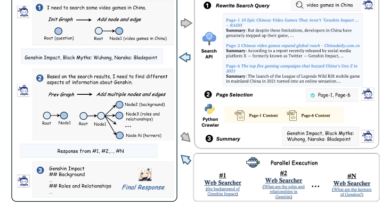Microsoft’s RD-Agent: Revolutionizing R&D with Automated AI Solutions
Research and Development (R&D) has always been a cornerstone of innovation, yet the traditional processes are often cumbersome and time-consuming. Microsoft’s RD-Agent, an open-source AI tool, aims to transform this landscape by automating and optimizing R&D workflows. By eliminating repetitive manual tasks, RD-Agent empowers researchers, data scientists, and engineers to focus on more creative and complex aspects of their work.

Understanding RD-Agent
What is RD-Agent?
RD-Agent is designed to automate and streamline R&D processes across various industries, particularly those requiring continuous model evolution, data mining, and hypothesis testing. Its open-source nature allows for extensive customization and scalability, making it a versatile tool for different R&D applications.
Key Features
- Automation of Model Evolution: The tool employs a self-looping mechanism that continuously iterates and improves models based on new data. This significantly reduces the need for manual intervention, allowing teams to focus on innovative R&D goals.
- Auto Paper Reading and Implementation: One of the standout features is its ability to automatically extract key formulas and concepts from research papers and financial reports. These insights are then translated directly into executable code, bypassing the often tedious process of manual implementation.
- Quantitative Trading Applications: In the financial sector, RD-Agent automates the extraction of factors from financial reports and implements quantitative models. This is invaluable for industries that rely heavily on data-driven decision-making.
- Medical Predictions: The tool can develop and refine predictive models based on patient data, making it a powerful resource in healthcare R&D.
- Collaborative Framework: RD-Agent continuously evolves by learning from real-world feedback, ensuring that it remains relevant and effective for various industrial needs.
How RD-Agent Works
RD-Agent operates through a series of automated steps:
- Data Ingestion: The tool reads input data, which can include research papers, financial reports, or any other structured data format.
- Hypothesis Generation: Based on the input data, RD-Agent proposes a hypothesis or model.
- Model Implementation: The proposed model is implemented in code, allowing for rapid testing and iteration.
- Outcome Reporting: Finally, RD-Agent generates a detailed report on the results, highlighting key findings and areas for further research.
Real-World Applications

Finance
In quantitative trading, RD-Agent has shown to reduce the time required for developing and testing trading models. By automating data extraction and model implementation, it enables more accurate and timely investment decisions.
Healthcare
In medical R&D, RD-Agent’s ability to handle large volumes of patient data and continuously refine prediction models has led to more accurate diagnoses and treatment plans. For example, iterative model updates based on patient feedback have significantly improved predictive accuracy for chronic disease management.
User-Friendly Setup
RD-Agent can be easily integrated into existing systems using Docker and Conda. A simple installation process ensures that users from various technical backgrounds can set up and start using the tool quickly. It’s compatible with large language models like GPT-4, making it highly adaptable for modern AI requirements.
Step-by-Step Installation Guide
- Create a New Conda Environment: Set up a new environment to ensure compatibility and isolation.
- Activate the Environment: Use the
conda activatecommand. - Install RD-Agent: Download and install RD-Agent from the official GitHub repository.
- Configure GPT Model: Insert the API key for the GPT model you wish to use.
- Start Using RD-Agent: Begin automating your R&D workflows with minimal setup.
Collaborative and Open-Source Approach
Microsoft’s decision to make RD-Agent open-source reflects its commitment to collaborative innovation. The tool is not only a solution for today’s R&D challenges but also a platform for future developments. Researchers and developers worldwide can contribute to its growth, ensuring that RD-Agent remains at the forefront of R&D automation.
Highlighted Results and Case Studies
- Improved R&D Efficiency: In early tests, companies using RD-Agent reported a good reduction in time spent on repetitive tasks.
- Enhanced Model Accuracy: Continuous feedback loops have led to improvement in model accuracy for medical predictions.
- Wider Industry Adoption: Since its release, RD-Agent has been adopted by leading companies in finance and healthcare, showcasing its versatility and effectiveness.
Future of RD-Agent
Microsoft plans to further develop RD-Agent by integrating more advanced AI models and expanding its applications to new industries. The tool’s continuous evolution, driven by user feedback and community contributions, ensures that it will remain a vital resource for automating R&D processes in the future.
Conclusion
RD-Agent is more than just a tool; it’s a revolutionary approach to R&D. By automating repetitive and time-consuming tasks, it allows organizations to focus on what truly matters—innovation. As an open-source platform, it offers limitless possibilities for customization and improvement, making it a cornerstone of AI-driven research and development in the years to come.
Got an incredible AI tool or app? Let’s make it shine! Contact us now to get featured and reach a wider audience.
Explore 3600+ latest AI tools at AI Toolhouse 🚀. Don’t forget to follow us on LinkedIn. Do join our active AI community on Discord.
Read our other blogs on AI Tools 😁
If you like our work, you will love our Newsletter 📰




